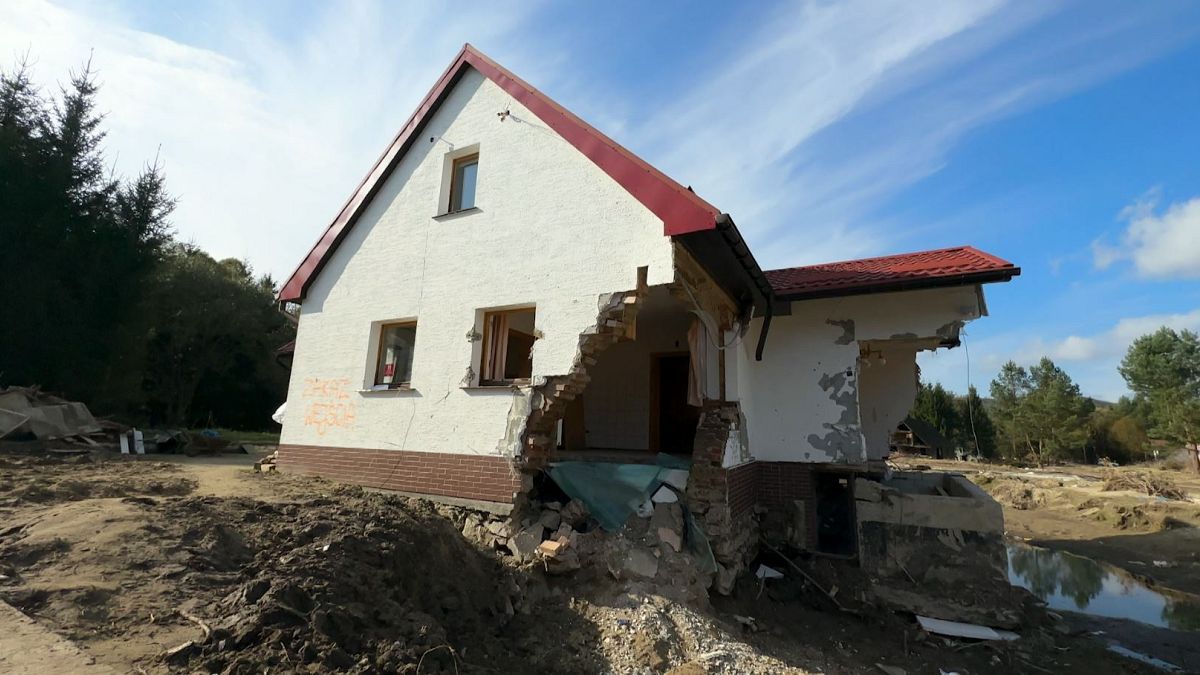Floods are the most common and most costly natural disasters in Europe. They are becoming more frequent due to climate change. What is Europe doing to anticipate and limit the damage?
In the past 30 years, floods have affected 5.5 million people in the European Union, causing 3,000 deaths and more than €170 billion in economic damage.
Storm Boris left a trail of destruction in September across central Europe. Around 30 people lost their lives. Nine people died in Poland, and over 6,500 people were evacuated. More than 11,500 homes were damaged.
On September 15th 2024, the dam close to the southwestern towns of Stronie and Lądek-Zdrój burst after days of heavy rain. Local resident Zbigniew Rakoczky has been checking what could be saved from his parents’ in-law’s house. They had lived there for over 30 years, just metres away from the river.
“We could go back only two days after the flood. What we found was similar to the pictures from the war in Ukraine, but without shooting,” he said.
The disaster reminded Zbigniew of the ‘Millennium floods’ that struck the region in 1997, killing over 50 people. It was the turning point in crisis management and civil protection in Poland.
Today reports say flood risk reduction still requires more effort. The existing priorities typically focus on large infrastructure, while local small-scale solutions are still lagging.
The EU has different mechanisms to help its member States. When an emergency hits, the EU first disaster response is its Civil Protection Mechanism. It organises and coordinates an emergency response between all EU countries and 10 other participating states. It has responded over 700 times since 2001.
The Solidarity and Emergency Aid Reserve provides a rapid financial response to all kinds of emergencies in the EU and participating countries. The EU Solidarity Fund offers more long-term financial support. It has paid more than €8.2 billion since 2002. Flooding is the most commonly funded event.
The residents of the Polish towns devastated by September’s floods don’t have a clear picture of how European institutions are acting in their support. I asked the European Green Deal spokesperson Stefan de Keersmaecker to explain Europe’s role in case of natural disasters like floods.
“Cohesion policy has reserved around €14 billion, under the current program period 2021-2027 to handle or to support disaster risk management, which focuses on prevention and preparedness. Poland has earmarked around 2.9 billion for preventing and managing climate-related risks under the current program period,” he explained.
Stefan said that the Commission and the member states agree on the priorities for funding, but member States are responsible for how the money is used.
“We call this in cohesion policy “shared management.” It makes total sense, of course, because the member states are much better placed to know which organisations require which type of funding. We make sure that the funds are made available to the member states and that the member states actually manage the funds.”
Climate change is modifying European policies. Adaptation requires time and resources. Extreme weather events cannot be prevented from happening, but countries may be able to improve how they respond to them.

